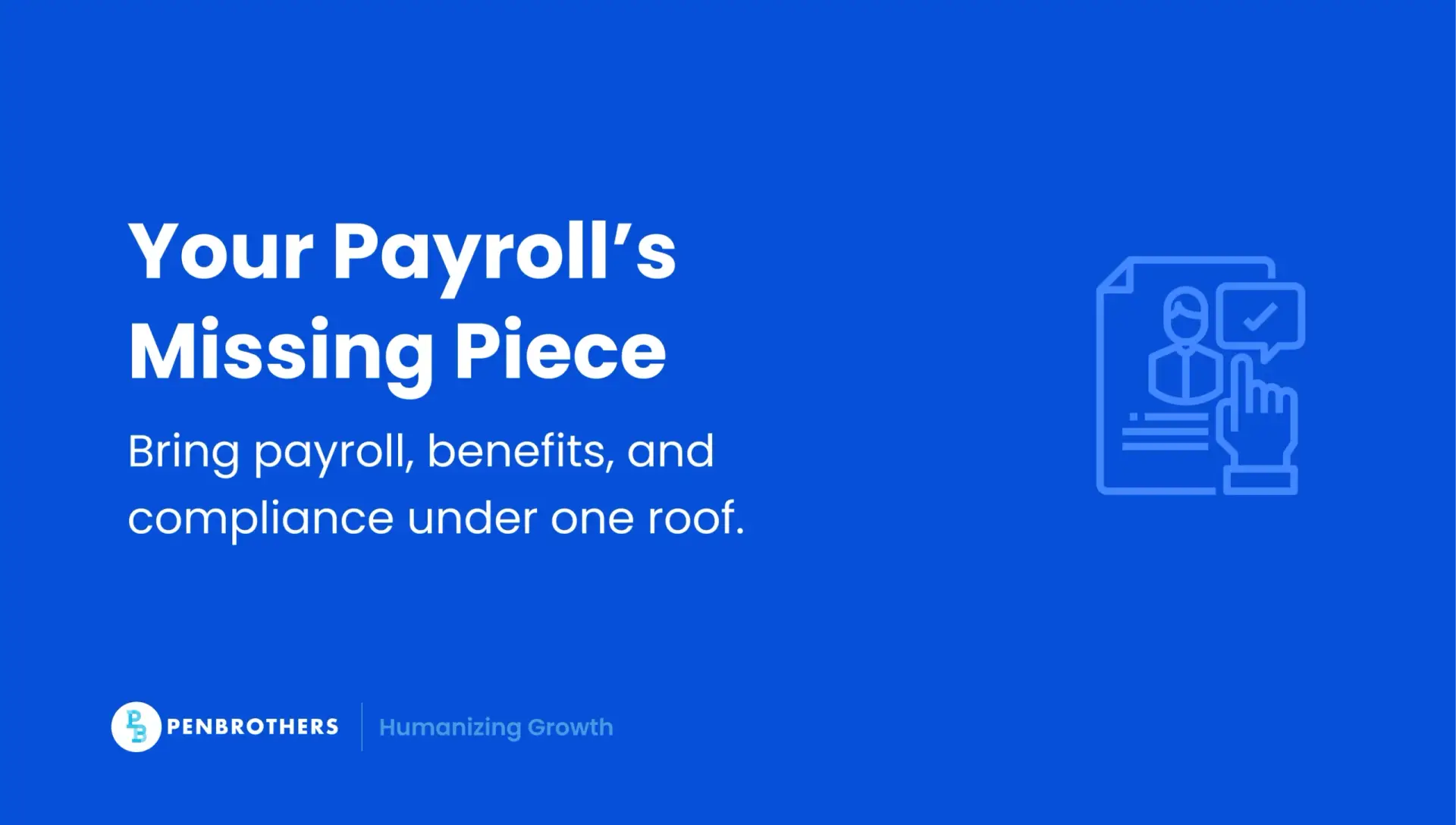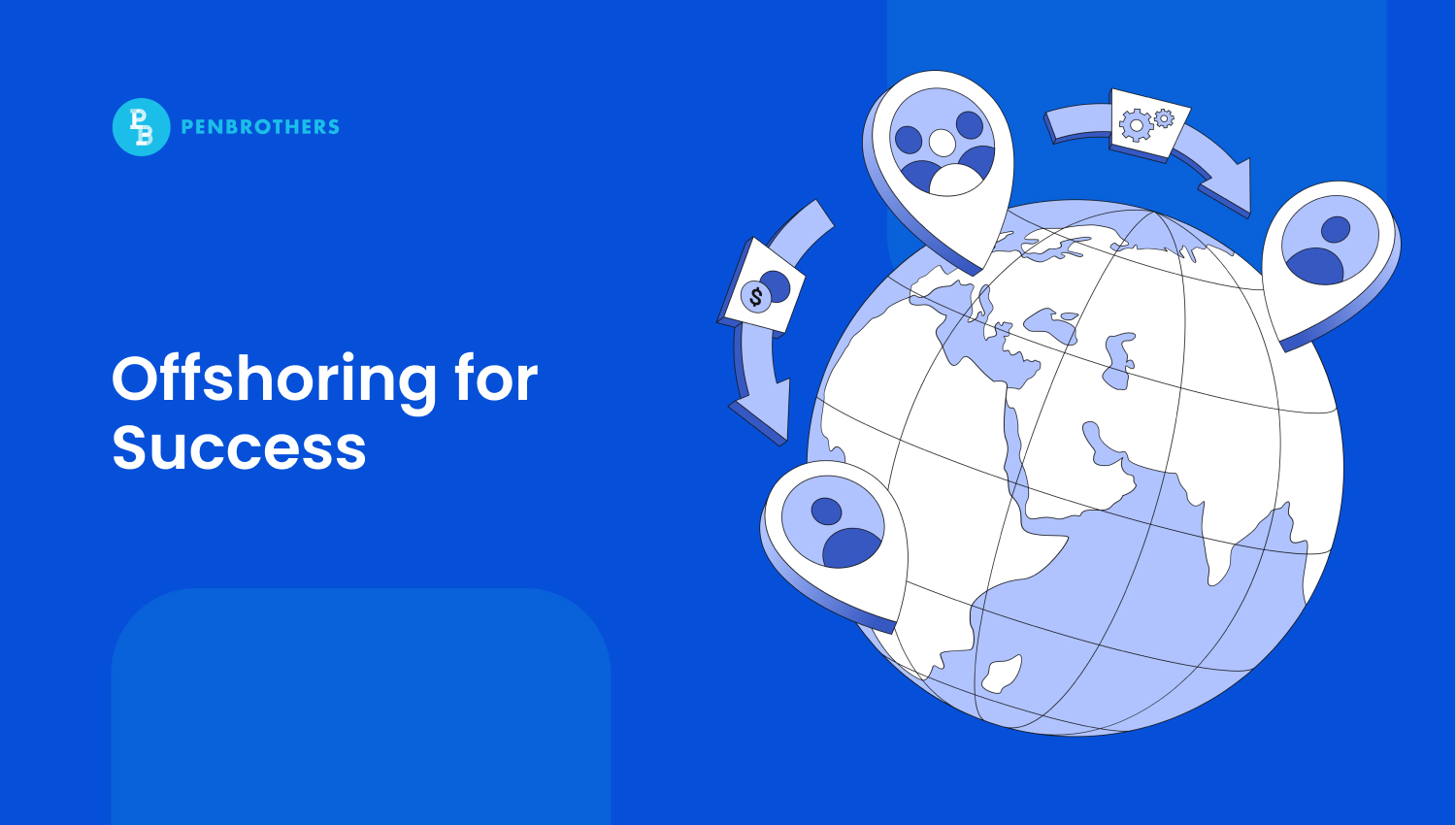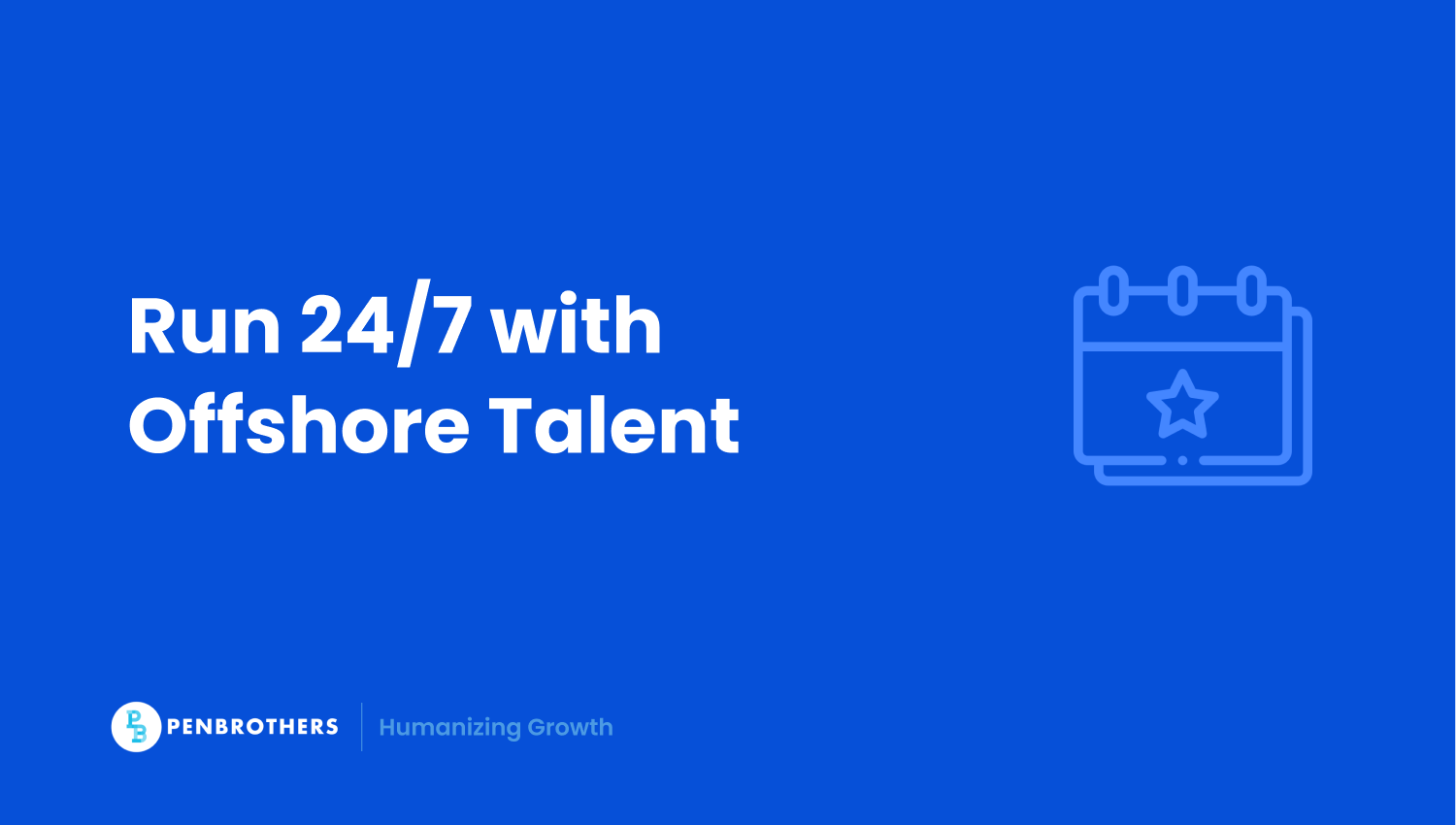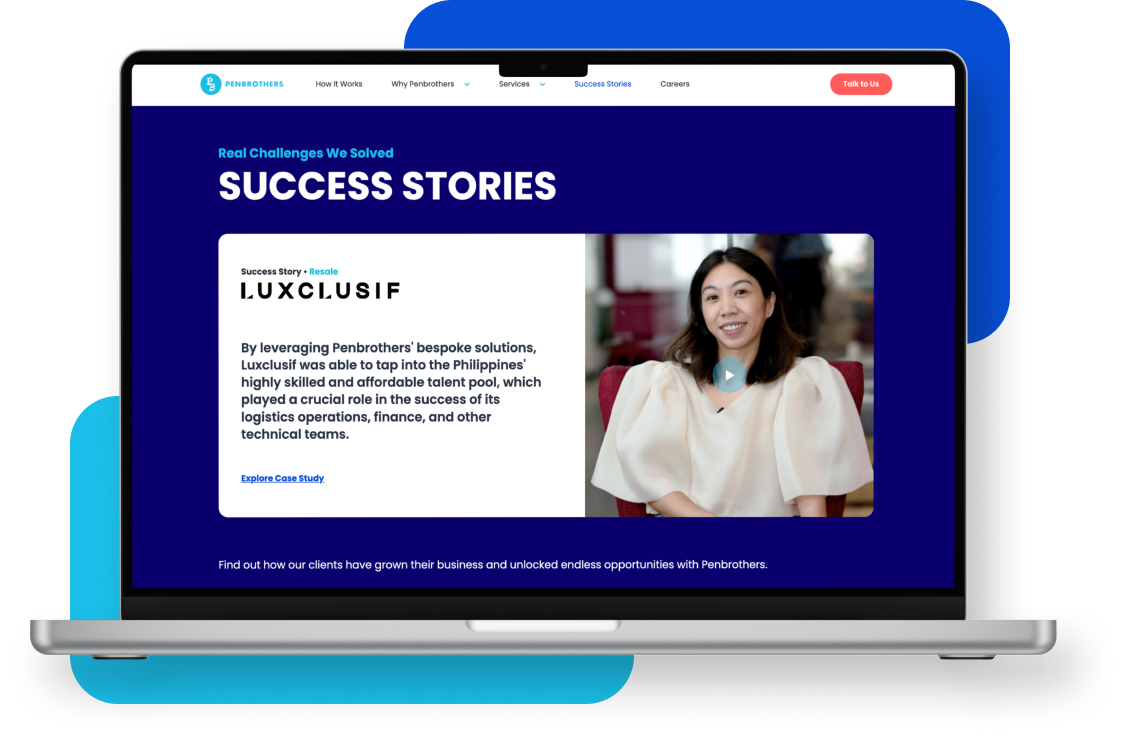What's Inside?
Hidden Benefits of Hiring the Right People

Key Takeaways
- Financial stability for your high-growth remote team in the Philippines is anchored in meticulous cultural and compliance alignment from day one. This proactive vetting against unseen pitfalls transforms your hires into strategic safeguards, far beyond just filling a role.
- For fast-paced distributed teams, true vetting success lies in mastering “invisible” red flags like self-management and asynchronous communication. This foresight, especially when sourcing in the Philippines, is your strongest defense against future performance drains and costly re-evaluations.
- Maximize your investment in high-caliber remote talent in the Philippines by prioritizing internal mobility. Cultivating clear growth pathways transforms strong hires into long-term, impactful leaders, directly fueling your company’s ambitious trajectory.
Hiring the right people improves your business in unseen ways. In this article, we’ll highlight how a good hire reduces company expenses, improves team dynamics, etc. We’ll cover how to identify a mismatched hire and the steps to take after finding one.
An unfit candidate creates poor team performance. It lowers the team’s overall efficiency, delays projects, creates monetary setbacks, and disjoints the workplace culture. Investing in a good hire by qualifying your offshore employees avoids these risks. You’ll unlock a range of hidden advantages beyond filling an open position.
Why is It Important to Hire the Right People?
For your hyper-growth remote team, particularly one scaling with exceptional talent from the Philippines, hiring the right individuals is foundational. It’s not just about filling roles, but strategically building a resilient, compliant, and rapidly executing workforce. The correct fit prevents the costly productivity drains and legal pitfalls that can derail a fast-paced enterprise’s journey, especially when navigating global remote operations and diverse time zones.
Truly aligned hires in the Philippines amplify your innovation capacity and safeguard your brand. They are proactive contributors who understand distributed work, ensuring seamless integration and protecting your business from unseen compliance challenges. This strategic approach to talent acquisition transforms hiring from a mere task into a powerful driver of sustainable growth and ambitious success.
4 Benefits of Hiring the Right People
Adding the right member to your workforce has a cumulative effect on your business. Here are the benefits that come from hiring the right people.
1. Enhanced Innovation and Creativity
Innovation is a valuable soft skill that aids in outperforming competition and improving business resilience. Hiring an employee for the first time who fits well with your current team can drive innovation. They do so by fostering curiosity and creativity while creating a non-toxic work environment, which is also a predictor of attrition.
Building a diverse team is a particularly well-fitting formula for driving innovation in a company. Having diverse employees introduces new and varied approaches and perspectives.
They ask prompting questions. They seek novel approaches to common organizational challenges. They’re empowering in the development of new products, business models, and strategies.
They also encourage proactive innovation through experimentation and exploration. An employee who encourages innovative approaches helps businesses thoroughly develop their business’s unique selling proposition (USP). Thus, their presence can boost your business into a market-leading and pioneering industry leader.
2. Strengthen Team Dynamics
Hiring the right person does more than fill roles; it strengthens and unifies your team.
The right hires enhance team communication by promoting transparency, active listening, and clear articulation. This reduces misunderstandings and ensures smoother project execution.
Good hires are naturally team players. As team players, they actively promote knowledge sharing.
They build trust and foster team cohesion. They approach problem-solving and decision-making as a collaborative task. Thus, creating a multi-faceted approach to strategic planning and a safe environment for idea-sharing, conflict resolutions, and risk-taking
One of the benefits of hiring the right employee is that they fill internal skill gaps while aligning with company values. That way, their presence can create a collaborative, productive, and positive workplace. These long-term gains boost overall business performance and growth.
See Also: Improve your Philippine remote team’s productivity and engagement with these practical strategies.
3. Improve Employee Retention
Hiring the right people ensures stability and growth, while poor hires increase turnover. Additionally, bad hires can hurt team morale and retention.
Frequent departures signal poor management and limited growth, making recruitment challenging. High turnover incurs costs like recruitment, training, lost productivity, and disrupted team dynamics. It also risks losing institutional knowledge. That’s why hiring the right individuals from the start is crucial.
By hiring capable workers, your top performers are more motivated to continue working with you. They’ll be more likely to recommend working for your company to other people in their network.
Aside from reducing costs, a high retention rate also gives your company a strategic advantage. With tenured employees, you’re keeping experienced, engaged employees who drive innovation, stability, and growth in-house.
By emphasizing cultural fit alongside technical ability during hiring, you improve the employee retention rate. Overall, this leads to better morale and lower turnover, which is the formula for long-term success.
4. Positive Company Reputation
A company’s reputation often influences potential customers before any direct interaction occurs. Thus, businesses need to create and maintain a positive brand image.
Employees often serve as brand ambassadors of your company in customer interactions. This applies to all customer touchpoints during the buyer journey. Therefore, skilled employees who create better customer experiences can also improve your company’s reputation.
When you hire skilled employees, they can innately provide knowledgeable and empathetic customer service. They’re better equipped to meet customer needs. Thus, enhancing a customer’s perception of your business.
The happier customers are with your service, the more loyal they will be to your business. Thus, you’ll get more consistent customers and revenue.
Related: Want to improve customer service in other ways? Find tips on offshoring your customer service centers to the Philippines here.
How Do You Hire the Right People?
Hiring the right talent for your remote, high-growth team in the Philippines demands a specialized, proactive strategy. Beyond traditional interviews, your process must precisely identify not only technical skills but also critical remote competencies like self-direction, effective communication across distances, and adaptability within a rapidly scaling, distributed environment. Implement robust, remote-specific assessments, including behavioral questions and practical tasks that simulate your actual work environment.
Integrate a deep cultural assessment to ensure alignment with your company’s values, understanding the unique work ethic in the Philippines. Simultaneously, embed pre-emptive compliance vetting into every stage, ensuring each hire is legally sound according to local labor laws. This meticulous approach guarantees you’re securing high-caliber talent that is both culturally harmonious and fully compliant, safeguarding your rapidly expanding business from the outset.
Red Flags to Watch Out for When Hiring New Employees
Identifying warning signs during the hiring process can reduce your risk of hiring an employee who won’t fit within your company. Here are examples of six indicators to watch out for:
1. Negative Comments
The interview during the hiring process is a great chance to see a candidate’s face-to-face communication abilities. It can also bring up certain concerning attitudes of a candidate.
One potential issue that may come up is if a candidate has negative comments about previous employers. It can indicate unresolved issues or an inability to maintain professional relationships.
2. Lack of Preparation or Enthusiasm
When a candidate shows up to the interview unprepared and they answer unenthusiastically, it can indicate that they’re not going to be motivated at work.
During the interview, look into their reasons for applying and their long-term goals. This can help you fully understand whether their demeanor is a temporary lapse or a persistent concern.
3. Overemphasis on Title and Compensation
If a candidate is more concerned with compensation and job title, that’s a cause for concern.
Instead, you want a candidate who displays thoughtfulness about their job responsibilities. They should also show an interest in the company culture, as it shows that they care about being a good fit.
4. Inconsistent Job History
Lapses in one’s employment are common. In this case, a truthful explanation of these lapses can be a positive sign of an honest candidate. However, if their responses are inconsistent, there may be underlying issues like a lack of transparency that you should think about.
5. Inadequate References
Part of an employee’s background screening involves checking their references.
What you should look for from references are clear and specific qualities in the candidate that they liked. If the references’ descriptions of the candidate are too vague or categorically negative, then that’s a cause for concern.
Tip for Hiring Managers: Create a database of these pre-qualified candidates. That way, if you need their skills in the future, you already have a group of candidates to contact. This can help quicken the hiring process.
Signs It’s Time to Reevaluate Your Recent Hire
A candidate can appear as a good fit during the recruitment process. However, they might fail to hit reachable benchmarks upon hiring. How do you then know if it’s a sign to reassess a hire? Here are signs to watch out for in the hiring process.
1. Lack of Work Quality Improvement
The probationary period is a chance for managers to discern if an employee is qualified for the position. In this phase, managers must closely monitor and evaluate a new hire to accurately determine how they fit in their role.
Providing guidance and support can help a new hire better adjust to the work. You can do this by creating open communication and readjusting management styles as you see fit.
However, you should set an adjustment period deadline. After the deadline, you can assess if there is improvement in the employee’s performance as time went on. If a new hire hasn’t improved despite thorough training and multiple reviews, reassess their role in your company.
2. Consistently Missing Deadlines
Missing deadlines is another unfortunate, but common occurrence in the workplace. However, if it’s a pattern that you’re finding in a new team member, that’s something you must address.
It’s especially concerning when employees in a similar job role can easily meet the deadlines. Another sign that the missed deadlines require a closer look is if they don’t communicate if they think they’re about to miss a deadline.
3. Tardiness
Tardiness can sometimes occur. However, if it happens regularly, that’s something you shouldn’t tolerate.
One of the basic requirements for hiring employees that employers look for is being punctual. So failing to be on time for previously discussed work hours is a sign of a mismatched hire. It’s increasingly concerning if the team doesn’t receive communication about whether the new hire is going to be late.
4. Poor Team Synergy
If hiring a new candidate leads to inefficient team performance, you need to reconsider their inclusion in your team.
Some signs that a candidate might not be good for a current team’s synergy would be:
- Frequent complaints from other team members
- Distracting team members while they’re working
- Demotivating and negative attitude
- Lowered overall team performance
If you choose to retain a candidate who doesn’t fit well with the rest of the team, it can demotivate employees. That can lead to an increase in resignations and poor work quality.
5. Aversion to Skill Development
When in a new role, a new candidate must be willing to learn and grow. A willingness to learn is a sign of a highly engaged individual with the ability to adapt.
An aversion to adopting new practices for no particular reason can be a sign that they aren’t engaged in your company. They will also have difficulties keeping up with changing industry standards, which is crucial in any modern organization.
The importance of hiring and retaining the right employees is that you gain a workforce that grows alongside your business. Plus, their interest in skills development will help improve your business operations as they continue to work with you.
6. Poor Communication Skills
Communication skills are the top competency employers look for.
While miscommunication can occur, a candidate needs a solid baseline of communication skills to thrive professionally.
Some mistakes are more manageable if proper communication is established throughout. If a new hire continues to show poor communication skills despite previous interventions, reconsider their full integration into the team.
If only one factor listed is present, there’s a strong chance that thorough training can improve a candidate’s compatibility. However, if multiple signs appear, a major reassessment is needed.
Essential Steps for Reassessing a New Hire Effectively
After determining that an employee isn’t a good fit, these are the five steps you must take to ensure a proper reassessment.
1. Conduct a Performance Review
A performance review can show you where a new hire will need improvement or where they’re doing great. Communicating key performance indicators maintains fairness in the employee review process. It does so by ensuring that you’re assessing them based on their performance alone.
2. Provide Clear Feedback and Consistent Support
After the performance review, you should communicate the results to the new hire.
You need to give clear feedback to new hires so you’re setting them up to succeed in their role. It also ensures you’ve done your due diligence by notifying them where they need to improve and how.
3. Consider Reassignment
Sometimes, when hiring an employee for the first time, they appear to be a great cultural fit, but their skills do not match their current role. You should consider reassignment in this case.
Base their new role on the tasks that they’re doing well from the performance review. Doing this lets you retain a skilled employee in your team.
4. Document Everything
As you continue to onboard a new hire, remember to document everything.
All feedback sessions must be documented. Any performance metrics should also be documented and communicated to them. That way, you have the references to legitimize your feedback and show transparency throughout the onboarding process.
5. Know When to Part Ways
Even with consistent training, feedback, and support, there will come a time when a new hire simply is incompatible with your company.
After you’ve done all the previous steps and found no improvements, that’s when you know you should let go of your new hire.
How to Promote the Right Person?
Once you’ve successfully brought high-caliber individuals into your remote team in the Philippines, cultivating their growth through promotion becomes a strategic imperative. This not only maximizes the long-term value of your initial hires but also significantly boosts retention and solidifies your commitment to talent development within a distributed, high-growth environment. Establish clear, transparent career pathways and growth metrics accessible to all remote team members.
Actively invest in their skill enhancement and leadership development, offering tailored programs or mentorship that account for the nuances of remote work. By systematically identifying and elevating those who consistently demonstrate potential and embody your core values, you transform promising hires into long-term, high-impact leaders. This continuous cycle of recognizing and nurturing talent ensures your remote team in the Philippines remains a powerful engine for your company’s sustained success.
Looking for Help Hiring Offshore Employees? Work With the Right Firm
Hiring an incompatible offshore employee leads to increased workplace inefficiencies. It can even incur unexpected costs in the long run.
The causes of incompatibility can be misaligned skills or mismatched cultural approaches. Nonetheless, it can lead to a disruption of project timelines and established team dynamics.
To mitigate these risks, partnering with a capable offshore company is important. You can create a more thorough vetting process and produce more high-quality candidates with their help.
Partnering with the right offshore firm ensures a seamless integration for your offshore employees. Simultaneously, you can reach up to 80% in labor cost savings while quadrupling your workforce’s headcount.
This content is AI-assisted and verified by a human subject matter expert and a human editor.





